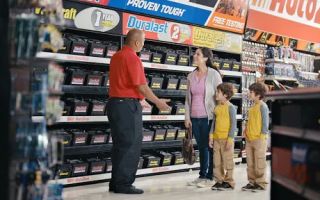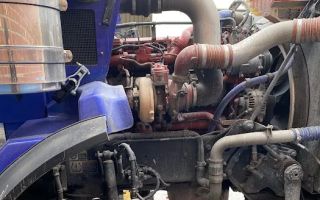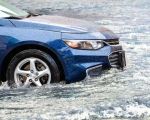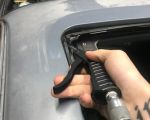How Low Tire Pressure Can Lead to Blowouts and How to Prevent Them
It was a hot summer day when I found myself on the side of the road, staring at a flat tire. Little did I know, this wasn’t just an ordinary flat tire. It was a full-on blowout caused by low tire pressure. At the time, I had no idea that something as simple as not checking my tire pressure could lead to such a dangerous situation. If you’ve ever wondered why low tire pressure is such a big deal, or how to avoid a blowout, let me share my experience and what I learned about tire safety along the way.

MR. TIRE INC.
2078 New York Ave, Huntington Station, NY 11746, USA
1. What Is Low Tire Pressure and Why Is It Dangerous?
Low tire pressure occurs when there isn’t enough air in your tires to support the weight of your vehicle properly. Tires are designed to carry a specific amount of air to ensure they’re able to grip the road safely. When the pressure drops below the recommended level, your tires become under-inflated, and this compromises their ability to function correctly.
In my case, I had been driving for several weeks without checking my tire pressure. The warning signs were subtle: slightly reduced fuel efficiency, a slightly bumpier ride, and uneven tire wear. But I didn’t think much of it until one fateful day when I was driving down the highway, and I suddenly felt the car swerving uncontrollably. The tire had blown out, and I was left stranded on the road.
Low tire pressure increases the risk of tire blowouts, which occur when a tire bursts due to excessive heat or pressure. Under-inflated tires create more friction with the road surface, leading to overheating. The heat weakens the tire’s structure, which can cause a sudden rupture. This is extremely dangerous, especially when you're driving at high speeds, as it can lead to a loss of control over the vehicle and increase the risk of a crash.

MR. TIRE INC.
2078 New York Ave, Huntington Station, NY 11746, USA
2. How Low Tire Pressure Causes Blowouts
Let’s break down why low tire pressure is so problematic. Here are a few key reasons why low tire pressure can cause a blowout:
- Increased Friction: When your tire pressure is low, the tire’s contact with the road increases. This extra friction generates heat, which weakens the rubber over time. As the rubber becomes hotter, it starts to lose its strength, increasing the chances of a blowout.
- Uneven Tire Wear: Under-inflated tires wear out unevenly, which means they’re more likely to develop weak spots. If one of these weak spots encounters excessive pressure, such as when hitting a pothole or road debris, it can cause the tire to burst.
- Reduced Handling and Stability: Low tire pressure makes it harder to control your vehicle, especially in emergency situations. Without the proper inflation, your tire isn’t able to maintain optimal traction with the road, increasing the likelihood of a blowout when you need the tire to perform its best.
From my own experience, I can tell you that the combination of high-speed driving and low tire pressure is a recipe for disaster. When I hit a small pothole, it was enough to trigger the blowout. The tire was already compromised due to the lack of air pressure, and that small impact was the final straw.
3. How to Prevent Blowouts by Maintaining Proper Tire Pressure
Now that you know the dangers of low tire pressure, let’s talk about how to prevent blowouts by ensuring your tires are properly inflated. Maintaining the right tire pressure is one of the easiest and most effective ways to prevent blowouts and keep your vehicle safe. Here’s what you can do:
- Check Tire Pressure Regularly: I cannot stress this enough—checking your tire pressure is crucial. You can use a simple tire pressure gauge to check the air levels in your tires. Most vehicles have a recommended tire pressure range listed in the owner’s manual or on a sticker inside the driver’s door frame. Aim to check your tire pressure at least once a month and before long trips.
- Fill Tires to the Correct Pressure: If your tires are under-inflated, fill them with air until they reach the manufacturer’s recommended level. Many gas stations have air pumps that allow you to adjust the tire pressure easily. If you’re unsure how much air your tires need, consult your car’s manual or the label on the side of the door.
- Inspect for Damage: Sometimes, low tire pressure can be caused by a slow puncture or damage. It’s a good idea to inspect your tires for any visible cuts, punctures, or bulges. If you spot any issues, get them repaired or replaced immediately to avoid the risk of a blowout.
- Don’t Overinflate: While it’s important to keep your tires adequately inflated, over-inflating them can be just as dangerous. Overinflated tires can become more prone to damage from road debris or impacts, leading to a higher risk of a blowout.
4. The Importance of Monitoring Tire Pressure in Different Conditions
The weather can also play a role in your tire pressure. Extreme temperatures can cause tire pressure to fluctuate, with colder temperatures causing a drop in pressure and warmer temperatures causing it to rise. I remember one winter, my tire pressure warning light came on as the temperature dropped below freezing. After checking my tires, I noticed that they had lost significant pressure. This was a reminder that temperature changes can have a significant impact on tire health, and it’s crucial to stay vigilant, especially during seasonal changes.
5. Real-Life Example: A Blowout on the Highway
Let me share a story of a friend who had a terrifying experience with a tire blowout. He was driving on the highway, and his car started to swerve unexpectedly. At first, he thought it was just a loss of control due to wet conditions, but then the tire exploded, causing him to spin out of control. Thankfully, he was able to safely pull over to the side of the road without causing a crash. Upon inspection, it was clear that the tire had been under-inflated, which led to the blowout. This experience reinforced how important it is to maintain proper tire pressure and keep an eye on tire health, especially when driving at high speeds.
6. When to Seek Professional Help for Your Tires
If you’re unsure about your tire pressure or suspect that your tires may be damaged, it’s always a good idea to seek professional help. Mechanics can inspect your tires thoroughly, recommend any necessary repairs, and ensure that your vehicle is safe to drive. In my case, after the blowout, I visited a trusted mechanic who helped me understand the importance of tire maintenance and offered advice on avoiding future issues.
7. Final Tips for Safe Driving and Preventing Blowouts
Here are a few final tips to keep your tires in great shape and avoid blowouts:
- Always drive cautiously, especially when road conditions are poor, such as in heavy rain or snow. Proper tire pressure can help improve handling in these conditions.
- Consider investing in high-quality tires that are more resistant to wear and tear. A good set of tires can reduce the chances of blowouts and improve your overall driving experience.
- Make sure your spare tire is in good condition and easily accessible in case of an emergency. You don’t want to be caught off guard if a blowout happens while you’re on the road.
By staying on top of your tire maintenance, checking your tire pressure regularly, and making sure your tires are in good condition, you can reduce the risk of blowouts and stay safe on the road. Don’t wait until it’s too late—take the time to care for your tires today and avoid the dangers of low tire pressure.





























